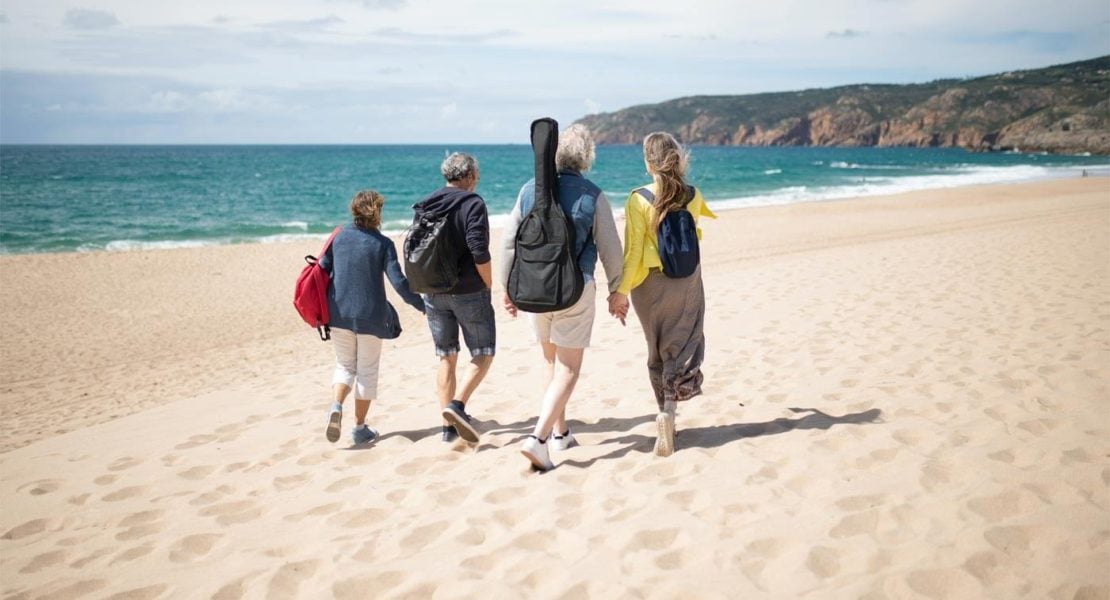When you close your eyes and imagine a working holiday maker, you’ll likely conjure up an image of a wide-eyed, fresh-faced 20-something ready for adventure.
The current age limit on 417 and 462 visa holders is either 30 or 35 depending on nationality. This could change as a growing voice for reform is getting louder.
The idea for the increased age limit was first put by the Tourism & Transport Forum Australia (TTF). Chief executive, Margy Osmond, argued that raising the maximum working holiday age to 50 is a simple and effective way to address current labour shortages and provide a myriad of other benefits to the country.
“It opens up to a marketplace of people who have different skills and perhaps more professional skills that we could use within the [tourism] sector,” she told ABC Radio.
Then Felicia Mariani of VTIC added her voice to the campaign to overhaul the working holiday program; “Australia has been non-competitive in this space for too long.” As reported in The Australian.
The proposed change to the visa age limit could have dramatic impacts. Here’s my breakdown of 10 ways this rule change could impact Australia and the backpacker market.
1. Addressing labour shortages
The first and most obvious impact of raising the working holiday visa age requirements is addressing labour shortages in key industries like agriculture, tourism and hospitality. While backpacker numbers have rebounded since pandemic lows, they still aren’t quite back to pre-COVID levels. Opening the program up to millions more would turbocharge this recovery.
2. Accommodation
There’s already an obstacle for backpackers as they traverse working and living across Australia. Accommodation options are limited and rents are high. The Australian rental market is already facing a shortfall in housing stock.
Many hostel operators are evolving their format to more modern offerings which mashup both co-living and co-working facilities. Hostels such as Selina, YHA and Nomads are already committing to this new format. Digital Nomads have led the way here defining a new way to travel, live and work.
3. An expanded talent pool
The stereotypical ‘gap year’ backpacker – the recent school or uni leaver looking for a couple of years of adventure before settling into a career – will change. Having potentially spent decades building their careers, older working holiday makers will bring a broader range of more specialised skills – the sort that can add serious value to the businesses who employ them, and, more broadly, to the Australian economy. Their expectations for quality employment and appropriate pay will also be front-and-centre.
4. Retaining the best
The current age limit means that Australia is waving goodbye to many talented people who want to be here, simply because they turn a year older. By extending the age limit, we grant talented people who already have an affinity to Oz an opportunity to stay.
5. Expansion of specified work
The agriculture industry enjoys a special place within the current working holiday visa requirements – most visa holders are required to complete three months of ‘specified’ work, which is overwhelmingly rural and agricultural, in order to obtain a second year visa extension. As part of its lobbying efforts the TTF is looking for other sectors to be included in this structure.
6. Embracing digital nomads
Many forward-thinking countries have identified the value of attracting digital nomads to their shores, and Australia could follow. It’s more difficult for people with established careers to take a gap year, so if age restrictions are loosened, there may be an opportunity to actively attract digital nomads, allowing them to continue working with their normal employer while travelling (and spending) down under.
7. A greater economic impact
Having had more time to build high value skills and save money, more seasoned backpackers will generally be bigger earners and spenders. Per person they are likely to have a greater impact on the Australian economy.
8. Tour product offerings
There are many Australian tour companies that currently cater to the backpacker and working holidaymaker set, but given the age and the often tight budgets of their clientele, these companies tend to offer a very specific type of product. Tour companies would have the chance to diversify their product ranges, offering higher-end products on top of the budget options.
9. Changes to industry branding
Further to the above, tour companies, accommodation providers and other travel businesses may consider moving away from the type of branding that has succeeded in the past – terms like ‘backpacker’, ‘youth hostel’ and ‘budget travel’ may be replaced for ‘adventure travel’ and ‘working nomad’ in an evolving market.
The industry has looked at this many times before, but with a new profile to working holiday makers, backpacker branding will need attention.
It will be a challenge to redefine what a backpacker is, does and looks like, but this will be a transition that tourism bodies will need to look at.
10. International competition
No country offers a working holiday program with such generous age requirements as those being proposed. Offering visas to people up to the age of 50 would differentiate Australia from the rest of the world, and make it a uniquely attractive option.


